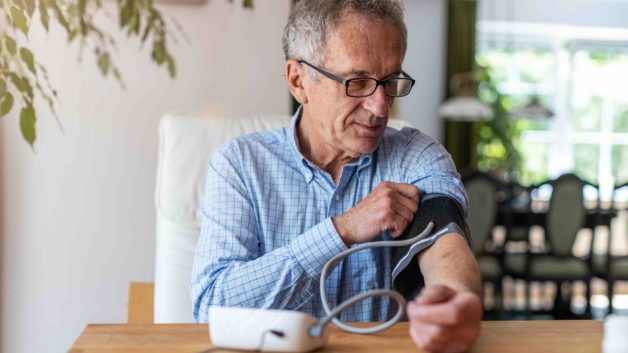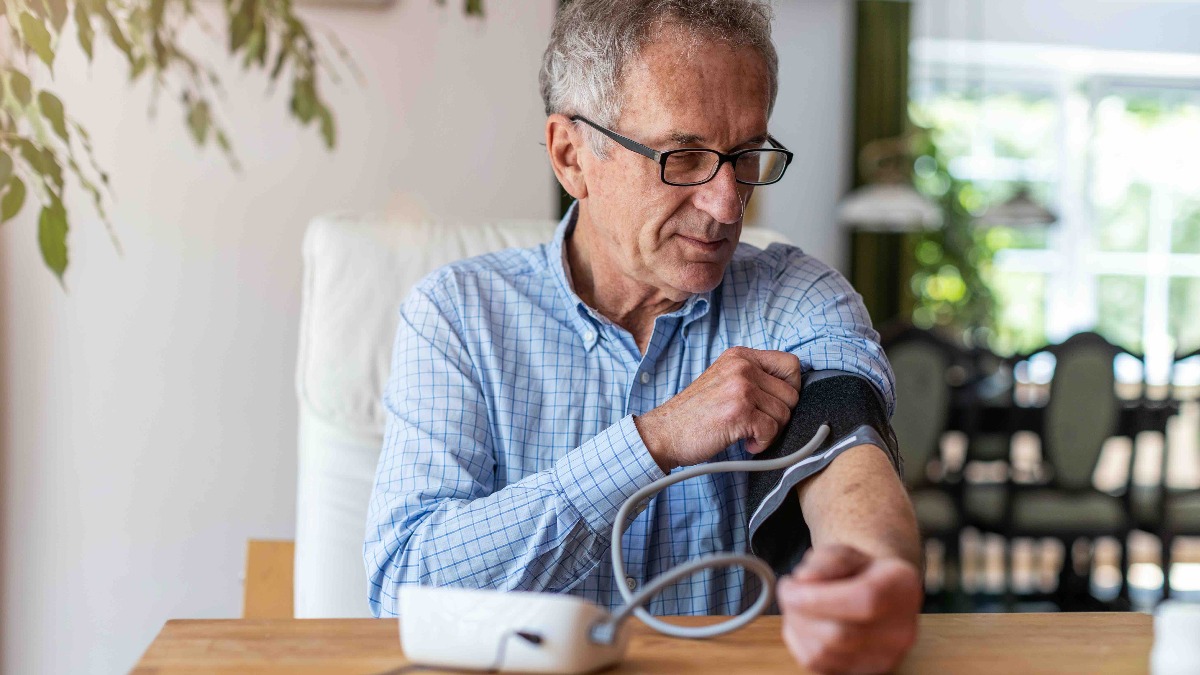
Berkeley Lab’s new endothelial function monitor can be used at home, much like a standard blood pressure monitor. (Credit: iStock/PIKSEL)
Blood pressure monitors are a common at-home tool for monitoring heart health, but they don’t look at the health of the endothelium, the lining of the blood vessels. And endothelial function is a powerful predictor of heart attack and stroke. It has also been linked to COVID-19 in a number of studies.
The trouble is, the current state-of-the-art method to monitor endothelial health, flow-mediated dilation (FMD), which measures the change in diameter in the brachial artery before and after shutting off blood flow, requires the use of an ultrasound scanner or expensive systems. The cost of these systems, and the technical skills needed to perform the measurement preclude frequent testing or continuous monitoring. And some FMD systems that are based on microvascular tone aren’t always accurate, as they are sensitive to “sympathetic nervous activation,” which can confound the results.
Berkeley Lab has developed a technology using cuffs, like those used for taking blood pressure, to monitor both endothelial function and endothelium-independent vasodilation. Studies on human subjects have verified that the cuff-based method is 37% more sensitive to arterial relaxation than brachial artery imaging. In addition, the apparatus costs one-fifteenth as much as an ultrasonic imager and eliminates the need for an ultrasound technician.
The lower cost and non-invasive method allows for routine detection and monitoring of endothelial health. That means earlier identification of cardiovascular disease and closer management of endothelial health.
“The cuffs are similar to the blood pressure devices many people already use,” said bioscientist Jonathan Maltz, who developed the technology with fellow bioscientist Thomas Budinger. “With this technology, people can regularly monitor their endothelial health, in addition to their blood pressure, either at the doctor’s office or in the comfort of their own homes.”
Maltz also invented a way to calibrate the cuff-based measurements with those of ultrasound-based flow-mediated dilation. The calibrations allow health providers to monitor the effects of interventions such as exercise, smoking cessation, dietary modification, and cholesterol-lowering therapy, on patient health.
The Berkeley Lab technology is now available for licensing.
